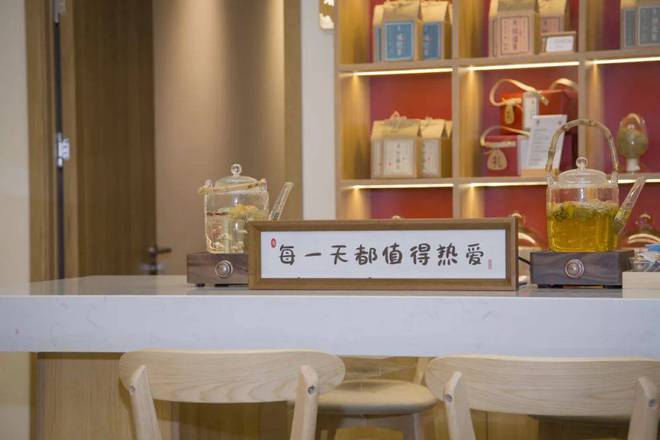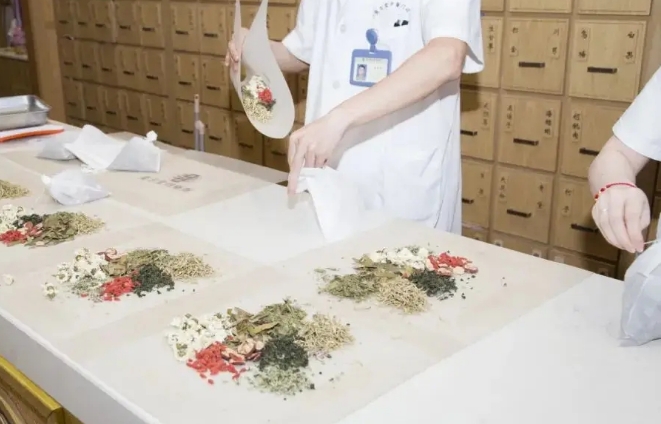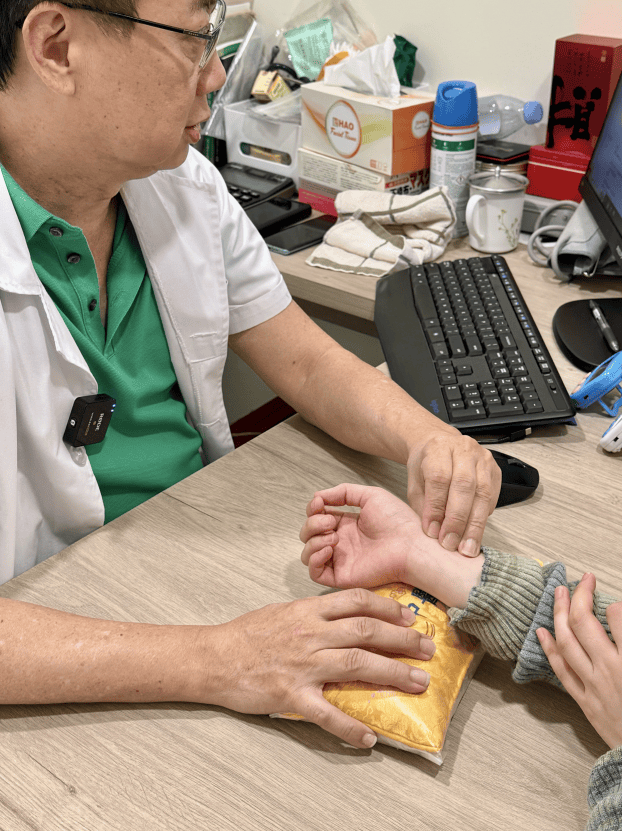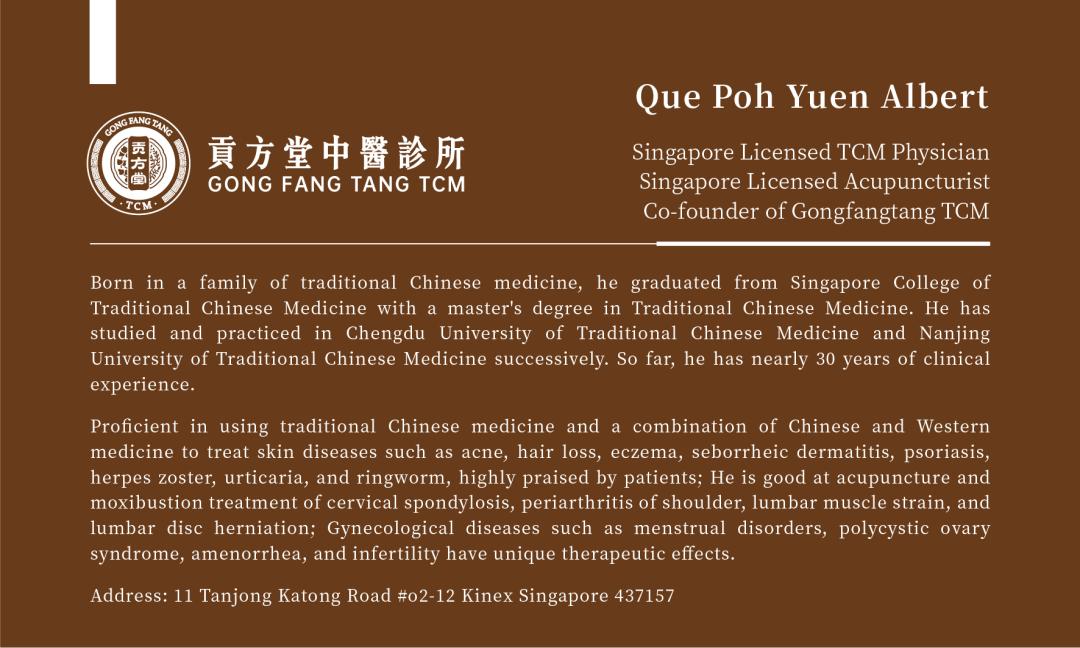- Physicians
- Clinics
- TCM
- Western GP
-
Fees
-
Deals & Privileges
- About & Resources
- Contact Us
Every month during their period, many women suffer terribly from dysmenorrhea. Cold, cramping pain in the lower abdomen, cold sweats... painkillers become a necessity. What are the most effective TCM methods for pain relief?

What causes dysmenorrhea?
Singapore TCM Gynecology expert Dr. Que Poh Yuen Albert from Gong Fang Tang TCM points out that dysmenorrhea caused by "air conditioning + cold drinks + high stress" leading to cold congelation and blood stasis is the most common clinical type! Manifestations include cold, cramping pain in the lower abdomen, dark purple menstrual blood with many clots, aversion to cold, cold limbs, pale purple tongue with a white coating.
"Air Conditioning as a Hidden Culprit": Cold Pathogens Directly Attack the Uterus!
Constant low-temperature air-conditioned environments create significant indoor-outdoor temperature differences. Wearing thin clothing, sitting for long periods in air-conditioned rooms, especially craving coolness during menstruation, allows cold pathogens to invade directly into the lower burner and uterus. "Blood congeals when it meets cold." Cold causes uterine blood vessel spasms, leading to qi and blood stagnation, triggering cold, cramping pain (relieved by heat application).
"Ice-Cold Drink Revelry": Severely Damages Spleen and Kidney Yang Qi!
Indulging in ice-cold milk tea and ice cream as a habit, especially continuing during menstruation. Raw and cold foods directly extinguish Spleen and Stomach Yang Qi, leading to internal generation of cold-dampness, worsening uterine stagnation; Kidney Yang is damaged, the uterus loses warmth, and deficiency-cold is generated internally.
"Siege of Damp-Heat": Stasis Transforming into Heat Causes Pain!
Tropical humid climate, combined with spicy, fried foods (laksa, curry, BBQ), and sweet, greasy diets, easily brew damp-heat. Damp-heat pouring downward into the Chong and Ren vessels obstructs qi and blood, forming "heat stasis," leading to unsmooth menstrual flow and burning pain (accompanied by thick, sticky menstrual blood and odor).
"High Pressure & Fast Pace": Liver Qi Stagnation Leading to Blood Stasis!
Immense pressure from work and life, emotional anxiety. Liver Qi becomes stagnant; Qi stagnation then leads to blood stasis. Stagnant blood obstructs the uterus, hindering the discharge of menstrual blood, causing severe distending pain (often accompanied by breast distension, irritability, worsened by emotional fluctuations).
"Qi and Blood Deficiency": Uterine Vessels Lack Nourishment Causing Pain!
Overexertion, excessive thinking damaging the Spleen, and improper dieting lead to Qi and Blood deficiency. During menstruation, Qi and Blood flow downward; deficient Qi lacks the force to propel, deficient blood fails to nourish, causing dull pain and a feeling of emptiness/sagging (especially after the period, accompanied by fatigue, pale complexion).

How does TCM regulate and cure dysmenorrhea?
Facing this kind of stubborn dysmenorrhea caused by cold congelation and stasis-induced pain, Physician Dr. Que Poh Yuen Albert particularly advocates for the classic formula from the Qing Dynasty famous physician Wang Qingren's Corrections of Errors in Medical Works – Shao Fu Zhu Yu Tang (Lower Abdomen Stasis-Expelling Decoction). This formula integrates the three major effects of "warming and unblocking, transforming stasis, and stopping pain," precisely targeting the core pathogenesis of cold congelation and blood stasis. Physician Qiu praises it as the "nemesis" for women in Singapore suffering from cold-type dysmenorrhea.
This formula consists of Xiao Hui Xiang (Fructus Foeniculi), Gan Jiang (Rhizoma Zingiberis), Yan Hu Suo (Rhizoma Corydalis), Mo Yao (Myrrha), Dang Gui (Radix Angelicae Sinensis), Chuan Xiong (Rhizoma Chuanxiong), Guan Gui (Cortex Cinnamomi), Chi Shao (Radix Paeoniae Rubra), Pu Huang (Pollen Typhae), and Wu Ling Zhi (Faeces Trogopterori). It has the function of invigorating blood and dispelling stasis, warming the channels, and alleviating pain.
In the formula, Xiao Hui Xiang, Gan Jiang, and Guan Gui warm the channels and dispel cold, reaching the lower burner; Dang Gui, Chuan Xiong, and Chi Shao nourish blood and invigorate blood, regulating and smoothing Qi and Blood; Pu Huang, Wu Ling Zhi, Yan Hu Suo, and Mo Yao invigorate blood and dispel stasis, dissipate nodules, and settle pain. The combined herbs achieve the effect of warming the channels and dispelling cold, invigorating blood and dispelling stasis, moving Qi, and stopping pain. By regulating the Qi and Blood circulation in a woman's body, improving uterine blood circulation, and dispelling cold pathogens from the body, it alleviates dysmenorrhea symptoms and improves the woman's physical condition from the root.
Modifications and Clever Applications:
Strengthen Uterus Warming: Often add Ai Ye (Folium Artemisiae Argyi), Wu Zhu Yu (Fructus Evodiae) to enhance the power of warming the uterus and dispelling cold, combating the strong cold from air conditioning.
Fortify Spleen to Prevent Damage: Add Fu Ling (Poria), Chao Bai Zhu (Stir-fried Rhizoma Atractylodis Macrocephalae) to protect the Spleen and Stomach, preventing warming herbs from damaging the acquired foundation.
Soothe Liver and Relieve Stagnation: Appropriately add Xiang Fu (Rhizoma Cyperi), Wu Yao (Radix Linderae) to address the common issue of stress and Liver Qi stagnation among local women.
Rapid Pain Relief: During severe menstrual pain, often combined with Yan Hu Suo Fen (Corydalis Powder) or Shi Xiao San (Sudden Smile Powder) taken with water for faster effect.

Medical Case
Patient: Miss Lin, 27 years old.
Complaint: History of dysmenorrhea for over 5 years, worsening in the past 2 years. Severe cold, cramping pain like knife stabs in the lower abdomen on days 1-2 of each menstrual cycle, requiring strong painkillers. Accompanied by large amounts of dark purple clots, coldness in the lower back and sacrum, extreme aversion to cold (needs thick blankets in air-conditioned rooms), craves iced coffee. Ultrasound showed no organic lesions.
Initial Consultation: Pale purple tongue, thin white coating, deep and tight pulse.
Pattern Differentiation: Cold Congelation and Blood Stasis pattern (caused by long-term air-conditioned environment + excessive cold drinks).
Prescription: Modified Shao Fu Zhu Yu Tang.
Herbs: Xiao Hui Xiang 6g, Gan Jiang 6g, Rou Gui (Cortex Cinnamomi) 5g (added later), Ai Ye 10g, Dang Gui 12g, Chuan Xiong 9g, Chi Shao 12g, Chao Pu Huang (Stir-fried Pollen Typhae) 12g (wrapped), Cu Wu Ling Zhi (Vinegar-fried Faeces Trogopterori) 9g, Cu Yan Hu Suo (Vinegar-fried Rhizoma Corydalis) 15g, Fu Ling 15g, Zhi Gan Cao (Honey-fried Radix Glycyrrhizae) 6g.
Medical Advice: Strict dietary avoidance: absolutely no ice-cold drinks or raw/cold foods, especially before and during menstruation. Protect the lower back and abdomen in air-conditioned environments (wear long socks, use a blanket), avoid wearing crop tops.
Usage: Start taking the medicine 5-7 days before the expected menstrual period, taken continuously for 7 doses.
Result: During the first menstrual cycle: Cold pain severity reduced by approximately 50%, clots decreased, painkiller dosage halved! Aversion to cold slightly eased. Second month: Pain further reduced (approx. 70%), only needed one mild painkiller tablet on the first day, clots became significantly smaller and fewer, warmth sensation in the lower back/sacrum increased. Third month: Menstruation arrived on schedule, only mild dull pain in the lower abdomen, no need for painkillers! Menstrual color turned red, very few clots, aversion to cold significantly improved.
